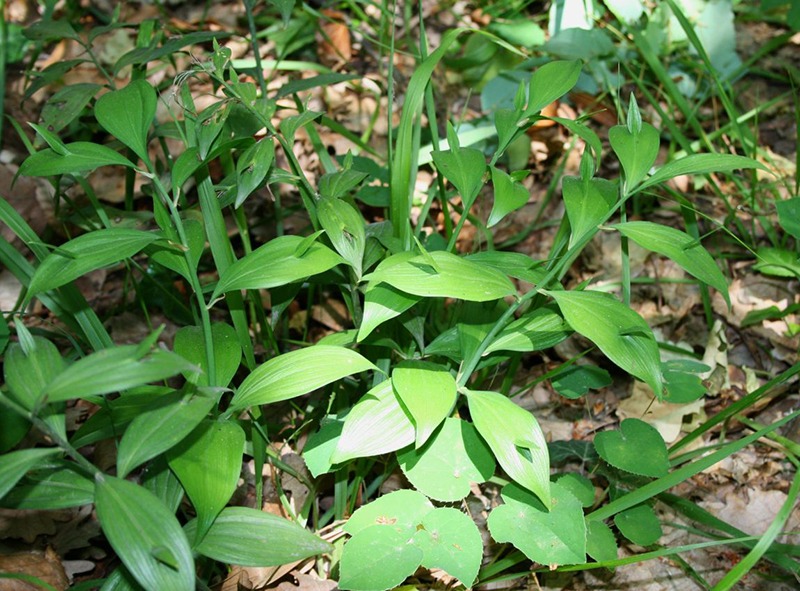As early as 1597, Ruscus was referred to as Hippoglossum, which is Latin for "horse-tongue".
Currently, there are six species of these small evergreen shrubs that are closely related to asparagus and lilies.
Harvested in spring, the young shoots were prepared like asparagus and reputedly had a somewhat pungent and bitter taste.
Ruscus hypoglossum is the most common species. Its stems form small thickets by means of dense rhizomes and once established, can thrive under shady trees and dry soil. It is a unique plant with a deceptive appearance. What looks like leaves are actually cladodes or flattened stems. Petite creamy-white blossoms surrounded by miniscule true leaves are found in the centers of these cladodes, generally with male and female flowers on different plants. Small red berries appear when plants of both sexes are planted near each other.

Once commonly seen in old homesteads, Ruscus hypoglossum grows 12 to 18 inches tall.
Julius Caesar was thought to wear this species of Ruscus instead of laurel to adorn his head. Native to the Mediterranean region, it is popular today in Ikebana and contemporary flower arrangements because it lasts up to ninety days as a cut green. Ruscus aculeatus or Butcher’s Broom is similar to Ruscus hypoglossum, but has more loosely branched stems that are thickly covered with dark, green cladodes ending in sharp prickly points. It is also a painfully slow grower, but once its brilliant red berries appear from September through winter its beauty is well worth the long wait. Some cultivars such as ‘Wheeler’s Variety’ are self-fertile and do not need male and female plants to produce berries.
Historically, Butcher’s Broom was cut and bound into bundles around a wooden shaft and sold to butchers who would use it to sweep their chopping blocks or floors after they finished their work.
The butchers would also use them as cages for preserved meat to protect them from foraging mice. Another name for this stiff shrub is ‘Knee Holly’ because of its prickly cladodes that normally grow to about 36 inches or knee-high. In the 1930s to 1940s, many Midwesterners dyed Butcher’s Broom cuttings red and used them as graveside blanket arrangements. Today Butcher’s Broom is still dyed red but is used for more cheerful Christmas decorations.
Both species of Ruscus tolerate deep shade, drought, alkaline soil, seaside conditions and compete successfully with established tree roots. For an unusual shade plant, take it directly from the horse’s mouth and plant both species of Ruscus. They will sweep you off your feet!
By John Bagnasco
